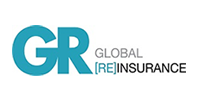’We’re now seeing the early signs of a cyber telematics model emerge, where insurance premiums reflect an organisation live security posture,’ says Google Cloud’s UK head of insurance, legal and financial services
The cyber insurance market has gone from strength to strength as it continues to mature and the risk becomes more commonplace in today’s digital world.

For example, a sustained period of pricing decreases in this line of business has continued across the globe, with broker Aon noting in a June 2025 article – entitled Cyber risk insurance market remains buyer friendly – that a 7% decrease in Q1 2025 followed 10 consecutive quarters of pricing falls.
This occurred alongside broader coverage and increased limits in most markets, especially for risks that demonstrated responsive cyber security protocols.
A similar June 2025 report published by Marsh, entitled Five trends in UK cyber insurance in the first quarter of 2025, added that cyber cover price drops have come despite losses and high claims volumes in industries such as retail.
The broker explained that “in the first half of 2025, insurers have been aggressive on cyber insurance pricing, especially in the UK, where competition is intense”.
As part of this landscape, there has been ”an increased focus on cyber controls in specific sectors that typically experience high claims volumes” – this evidences the increasing importance that cyber underwriters are placing on effective cyber security protocols when pricing this risk.
Risk-based underwriting
This pricing trend, in part, mirrors what has happened in the motor market around telematics technology.
Read: Recent international retail attacks ‘not big enough’ to harden cyber market
Read: High profile attacks represent penetration opportunity for cyber market
Explore more cyber related content here, or discover other news analysis here
Black box-based motor underwriting transformed how insurers price risk, with real-time data on driving behaviour allowing insurers to reward safe driving habits with lower premiums.
A survey conducted by The Green Insurer in 2024 found that while only 8% of UK drivers currently use telematics devices, 85% of these respondents reported reductions in their annual premiums of up to 20%, with the majority experiencing savings between 5% and 15%.
Speaking to Insurance Times, Google Cloud UK head of insurance, legal and financial services James Lord said: ”Black boxes have transformed how insurers price risk – and the shift hasn’t just improved pricing accuracy, it’s changed behaviour.
“So what if cyber insurance took the same approach?”
Lord explained that cyber insurers and their policyholders are constantly responding to new vulnerabilities and evolving attack vectors.
He added: ”Static assessments can’t capture that, but real-time data can. That’s why we’re now seeing the early signs of a cyber telematics model emerge, where insurance premiums reflect an organisation’s live security posture – not last year’s answers to a questionnaire.”
New approaches from firms such as cyber focused MGA Cowbell allow policyholders to generate cyber security reports that can be securely shared with underwriters to inform underwriting.
Google Cloud, for example, can facilitate this information sharing through its Risk Protection Program, which allows customers to generate reports and share them with insurers.
Lord said: ”In the automotive industry, telematics didn’t just change how policies were priced – it changed driver behaviour. In cyber, we have the same opportunity.
”When organisations can see and measure their risk posture in real-time, it becomes a catalyst for improvement. And when insurers can validate that posture continuously, they can price risk more confidently.
”We’re still early in this journey, but the direction is clear. Cyber insurance is on the edge of its telematics moment.
”With the right data and collaboration between insurers, brokers, tech leaders and customers, cyber insurance can evolve into a smarter, fairer system – one that keeps pace with the risks it’s built to protect.”

With a particular interest in regulation, technology, innovation and political stories, he has covered issues from the multioccupancy buildings scandal to the insurance implications of quantum computing and the growth of new markets.View full Profile
Hosted by comedian and actor Tom Allen, 34 Gold, 23 Silver and 22 Bronze awards were handed out across an amazing 34 categories recognising brilliance and innovation right across the breadth of UK general insurance.
























































No comments yet